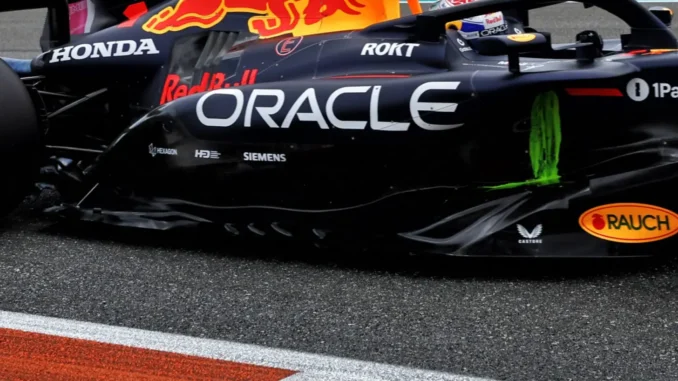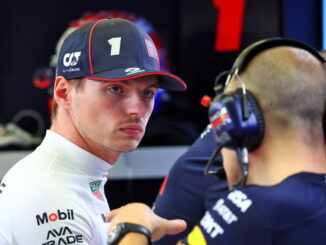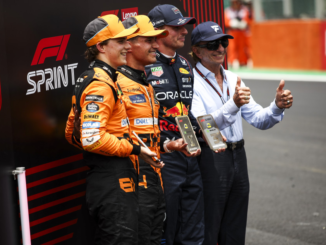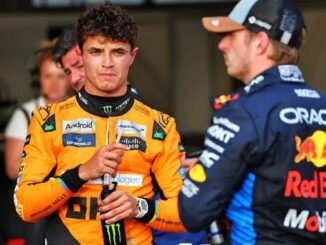
Max Verstappen in the Dark Over New Red Bull Floor After ‘Weird’ Experience
In a sport as technologically advanced as Formula 1, even the smallest tweaks can cause seismic shifts in performance. For reigning world champion Max Verstappen, the introduction of a new floor on his Red Bull RB20 at the recent Grand Prix weekend delivered a “weird” experience—one that left the Dutchman scratching his head and sparking fresh questions about the internal direction of Red Bull Racing amid growing tension within the team’s garage.
During the Friday and Saturday sessions, Verstappen experimented with a revised floor design that Red Bull quietly introduced. While such aerodynamic changes are not uncommon during the season, this particular update appeared to catch Verstappen off guard. The typically composed and feedback-sharp Dutchman reported an unfamiliar feeling behind the wheel, stating after qualifying: “It just felt weird. It’s hard to explain—it’s like I couldn’t trust the rear of the car in some corners. I don’t know exactly what they changed, and honestly, I haven’t been told everything.”
This statement is more than just a fleeting post-session comment—it’s a signal. Verstappen, known for being deeply involved in the setup and development of his machinery, doesn’t often admit to being left in the dark. That’s what makes his remarks so compelling. It raises the possibility of miscommunication—or even strategic divergence—within the Red Bull camp. Is Verstappen’s dominance prompting Red Bull to experiment too freely, or is there a growing rift between the technical team and its superstar driver?
The Red Bull floor update was supposed to improve aerodynamic consistency, especially in low-speed corners where the team has recently shown signs of vulnerability compared to its closest rivals, particularly McLaren and Ferrari. However, Verstappen’s reaction was anything but optimistic. “The car wasn’t doing what I expected. One lap it’s fine, the next lap I’m fighting to keep it on the track,” he added. “There’s not enough stability at the rear, and I don’t know if it’s the new floor or something else.”
Helmut Marko, Red Bull’s outspoken advisor, attempted to downplay the issue, suggesting that Verstappen’s discomfort was a result of variable track conditions and setup experimentation rather than any fundamental flaw with the new component. “Max is very sensitive to the car’s behavior. Sometimes these updates take a little time to understand,” Marko said. Yet even Marko’s comments seemed unusually cautious, hinting that there may be more to the story than meets the eye.
What’s particularly strange is that Verstappen was not consulted closely about the timing or necessity of the floor update, according to sources within the paddock. This is highly uncharacteristic of a team that usually prides itself on synchronizing development with its driver’s feedback. Verstappen himself made a pointed remark that he only “found out about the floor when it was already on the car,” a detail that’s likely to fuel speculation that Red Bull is either rushing updates or experimenting with setup ideas more independently than usual.
Adding to the intrigue is the broader context surrounding Red Bull Racing in 2025. The team has experienced growing internal turbulence this season, largely due to the fallout from the Christian Horner controversy earlier in the year and the rumored power struggles between different factions within the organization. There’s talk of technical staff aligning with different leadership camps—one favoring the aggressive development pushed by Horner, the other more aligned with Adrian Newey’s cautious and calculated approach. With Newey recently announcing his impending departure from Red Bull, some insiders suggest this latest technical confusion could be one of many growing pains in a post-Newey era.
For Verstappen, whose current contract runs through 2028, moments like this could sow doubt. The triple world champion is known for demanding excellence and transparency. If he starts to feel sidelined in technical decisions or believes that the team is experimenting without sufficient communication, it could impact his trust in the project. With the recent emergence of McLaren and Ferrari as legitimate threats, Red Bull cannot afford any missteps—technical or interpersonal.
The performance gap is also narrowing. At the last few races, Lando Norris has looked increasingly competitive, while Charles Leclerc has found fresh consistency. If Red Bull begins to falter—even slightly—in the development war, the championship picture could shift rapidly. A dissatisfied Verstappen in a compromised car could be vulnerable, and that’s a scenario no one in Milton Keynes wants to face.
To be fair, not all signs point to catastrophe. Red Bull has a history of ironing out quirks in new parts, and Verstappen remains a master at adapting once the full picture is clear. But the communication gap exposed by this latest update is an issue that team bosses must address. If Verstappen continues to be surprised by changes made to his car, it could have ripple effects on performance, morale, and ultimately results.
In the aftermath of the race, Verstappen was measured but firm. “I’ll sit down with the team and go through the data,” he said. “Hopefully we can understand what happened and get back to a better balance for the next race. I trust the guys, but I want to be involved—I need to be involved.”
That final sentence might be the most telling. Verstappen doesn’t want to just drive the car—he wants to shape it. Red Bull has always thrived when their technical brilliance was fused with Verstappen’s driving genius. If that harmony begins to unravel, the era of Red Bull domination could be in jeopardy.
As the season progresses, all eyes will be on whether Red Bull can maintain both its technical superiority and internal cohesion. One thing is clear: if Verstappen continues to feel “in the dark,” the lights at the front of the grid may soon shine on someone else.



Be the first to comment